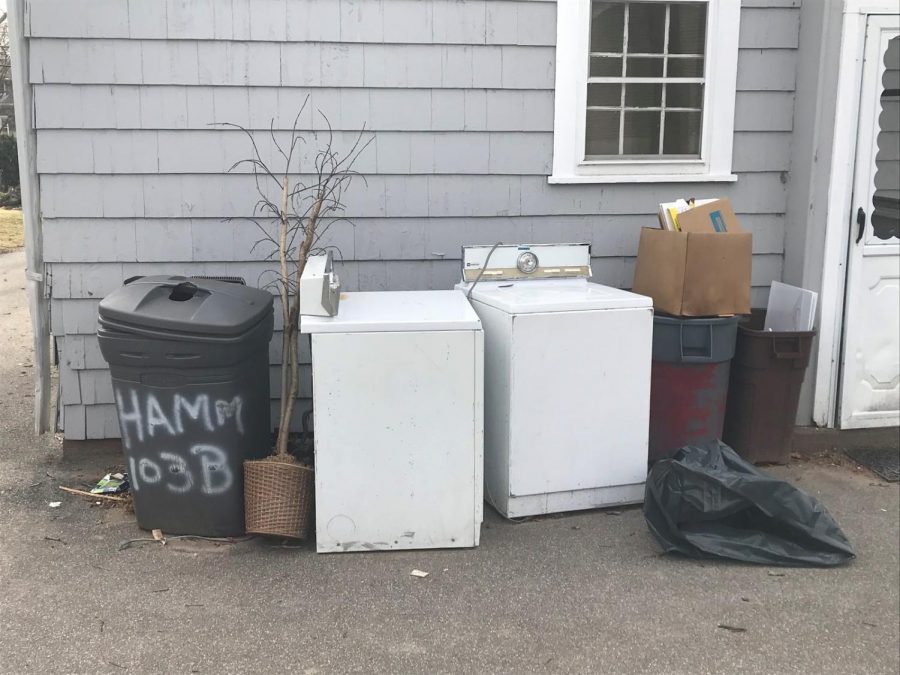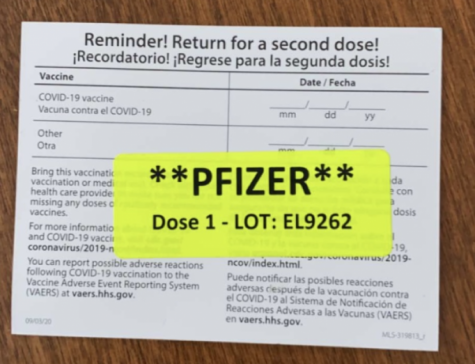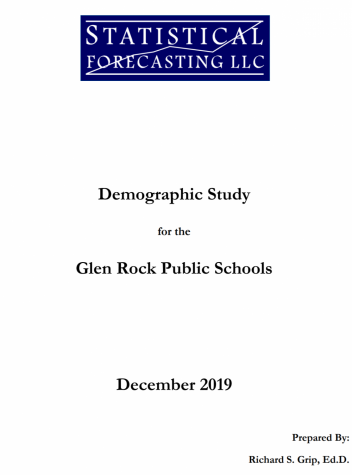Causes, effects, and solutions of local land pollution
Photo Credit: Kevin Lederer
Household trash left outside and abandoned. This can cause the releases of chemicals.
Land pollution is a major problem in the United States, according to the United Nations, the United States disposes of more than half of its solid waste in landfills. This amounts to over 110 million tons of waste per year and makes the US one of the top contributors to worldwide landfill waste. This affects every town in America including Glen Rock.
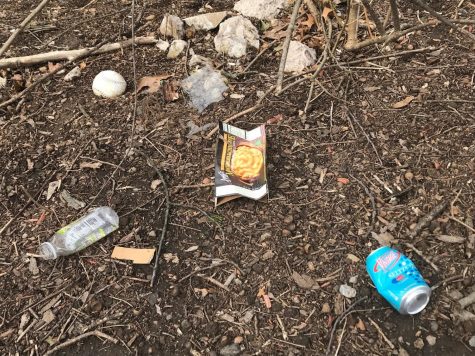
Litter that came from Memorial Park of Glen Rock. It is common to see it in clumps like this.
The planet where we live has been the most afflicted by the effects of land pollution. Deforestation is compromising tree cover, leading to a highly imbalanced rain cycle. A disturbed rain cycle affects a lot of factors such as our green cover; trees and plants help balance the atmosphere, without them we are subjected to various concerns; global warming, the greenhouse effect, irregular rainfall, and flash floods, among other imbalances.
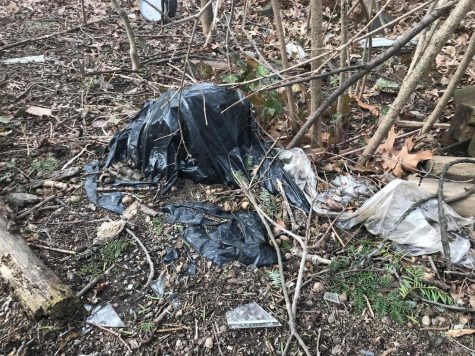
Trash affecting the soil around it. This bag has become one with the ground after being there for so long.
It takes at least 500 years for 2.5 centimeters of topsoil to regenerate, the United States loses soil at a rate 17 times higher than it takes to generate new topsoil.
The overwhelming amount of land pollution doesn’t just harm the Earth and plants it affects humans as well. The main problem has been skin cancer, which is the most common cancer in the United States. Every day 9,500 people are diagnosed with this type of cancer. Toxic chemicals and pesticides lead to potentially fatal illnesses in particular skin cancer and the human respiratory system. These chemicals reach us through foods and vegetables grown in polluted soil.
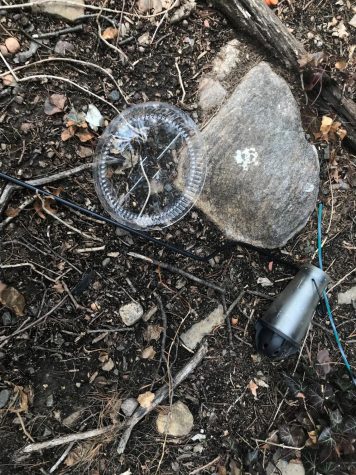
Plastic makes soil less fertile and does not dissolve. Food packaging items are the most littered
Drinking water is significantly affected by land pollution. About half the world’s population does not have access to safe drinking water, and water-based diseases cause up to 10 million deaths each year.
All of this pollution didn’t come out of anywhere. More than one million bushels of garbage are thrown out of car windows by Americans each year. Human pollution has been going on since ancient times and people have known about humans negatively impact the Earth since the 1950s.
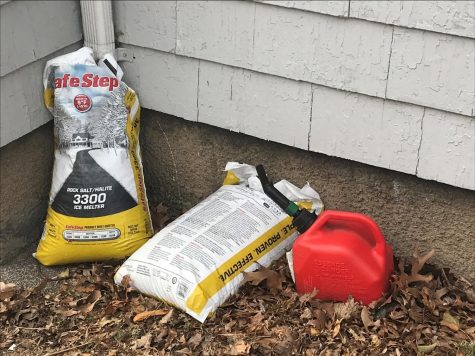
Gas and salt lay on top of leaves on a driveway. Inhaling air pollution from theses things take away 1-2 years of life
Today, the leading cause of air pollution in the U.S. are motor vehicles, which were first mass-produced in the U.S. by Henry Ford in the early 20th century. Auto emissions also increase the number of greenhouse gases in the atmosphere, which in turn contribute to global warming.
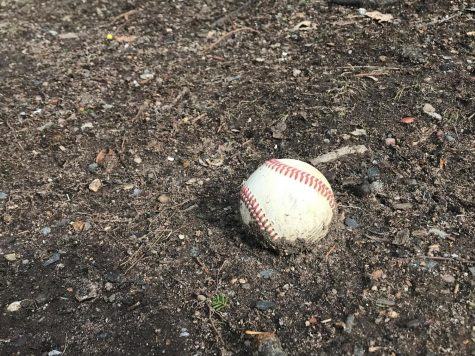
A baseball sinks into the dirt. Poor air and climate could one day bring sports to an end.
Owen Stephenson, a junior who goes to Glen Rock High School works at the Department of Works (DPW) over the summer, has seen an increase of the amount of trash he’s seen over the years he worked there.
“There’s always spots in town where you can find a decent amount of trash,” Stephenson said.
He said that the amount of work he’s had to do has increased over the years due to there being more trash.
Owen stated, “There’s always a lot of trash around the underpasses we visit and occasionally we can fill 3-5 black bags of trash. The spot that we visit that normally has the least amount of trash is the Arboretum.”
The people of Glen Rock can change the amount of trash by treating everything as if it were the arboretum. People should always choose not to litter and treat everywhere they good as if it were the arboretum.
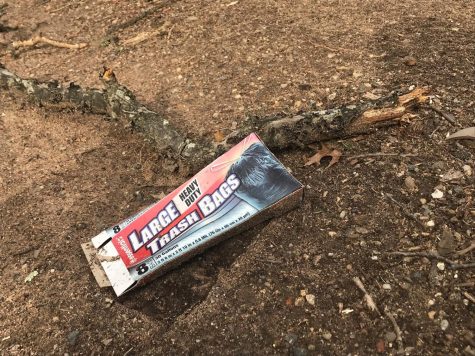
An old cardboard box rests in the dirt. Recycling cardboard only takes 75% of the energy need to make new cardboard.
Only thirty-four percent of Americans recycle every year. The number has risen about by 5 times since the 1950s. This leaves sixty-six percent of the United States that doesn’t recycle. The most common trash found in the oceans are plastic bottles and plastic bags which both can be recycled.
We need to start recycling more because all of the trash we don’t recycle goes to a modern technique for land disposal of solid waste. That involves construction and daily operation and control of so-called sanitary landfills.
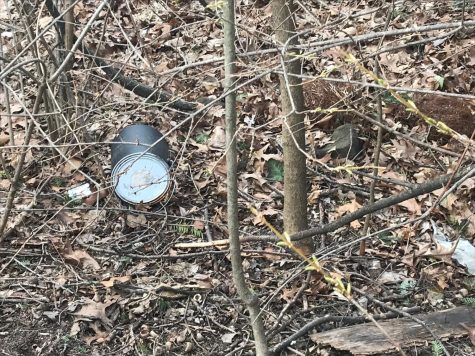
A can of paint lays in a small forest by an underpass. Paint fumes can cause headaches, trigger allergies and asthmatic reactions
Sanitary landfills are not dumps; they are carefully planned and engineered facilities designed to control leachate and methane and minimize the risk of land pollution from solid-waste disposal.
Even though we have better ways of disposal there are still so many items of trash slipping through the cracks. More than 80 percent of the trash in landfills are recyclable.
Before modern techniques for disposing of hazardous wastes were legislated and put into practice, the wastes were generally disposed of or stored in surface piles, lagoons, ponds, or unlined landfills. Thousands of those waste sites still exist, now old and abandoned.
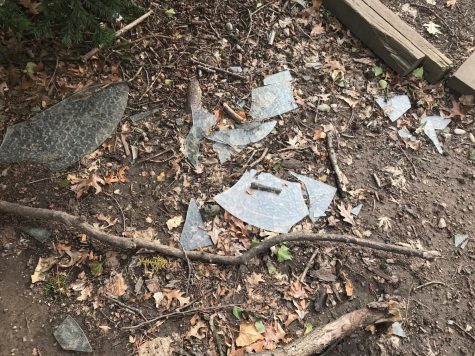
Broken glass left in a park near the arboretum. Producing a ton of glass from 100% raw materials creates 384 pounds of mining waste.
Also, the illegal, but the frequent practice of “midnight dumping” of hazardous wastes, as well as accidental spills, has contaminated thousands of industrial land parcels and continues to pose serious threats to public health and environmental quality.
Efforts to remediate or clean up such sites will continue for years to come. In 1980 the United States Congress created the Superfund program and authorized billions of dollars toward site remediation. Today there are still about 1,300 sites on the Superfund list requiring remediation.
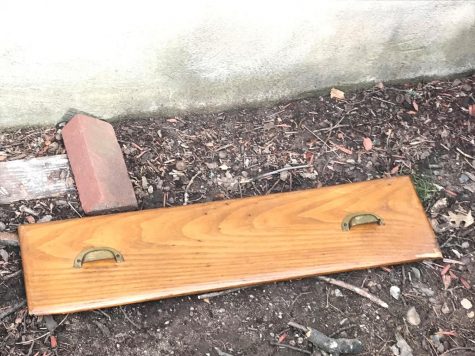
A piece of furniture lays on the ground behind a building in Glen Rock. The air in our homes and workplaces can be more polluted than outdoor air in the most industrialized cities, according to the Environmental Protection Agency.
Thomas Ring, a freshman at Glen Rock High School lives across from the DPW, has had different experiences compared to most people when it comes to the land pollution that Glen Rock goes through.
Ring said, “I’ve had a great experience with the people at the DPW. We’ve never had any trash on our yard from the DPW. It’s convenient sometimes to get rid of our trash.”
When I told Tom about the increase of people recycling he said, “I wouldn’t doubt if those numbers continued to go up. I’ve noticed a lot more people going to the DPW over the years and they make it for anyone to recycle.” He also mentioned people that aren’t able to move their trash can get help from DPW workers or they can just put it out during trash nights.
The town of Glen Rock is ahead of its time with being environmentally conscious. Glen Rock retailers cannot provide customers with single-use plastic bags at the register but can offer reusable bags and paper bags for a fee of at least 10 cents per bag. The fee is set and retained by the business. The ban would not apply to bags used in the store, such as produce bags or dry-cleaning bags, and customers on assistance programs are exempt from fees.
Fines against businesses ranged from $50 to $200 and the effects of this ban are expected to begin in 2020.
“The solution is clear: to reduce our consumption. This is a way of reducing behavior that hasn’t been able to be changed effectively or impactfully over the many years of education, including education that has happened locally in Glen Rock by the Education Commission,” said Councilwoman Arati Kreibich said to North Jersey Record’s Megan Grant.
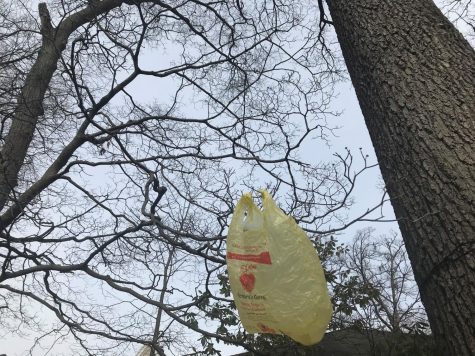
A yellow trash bag blowing in the wind. 160,000 plastic bags are used globally every second.
As the world becomes more and more polluted there are only a few ways that we can save the world and even make it a better place for future generations.
To reduce solid waste pollution on land, you can reuse materials such as cloth, plastic bags, and glass in your home rather than disposing of them. By recycling, you reduce the amount of solid refuse going to landfills and also make a contribution toward saving natural resources.
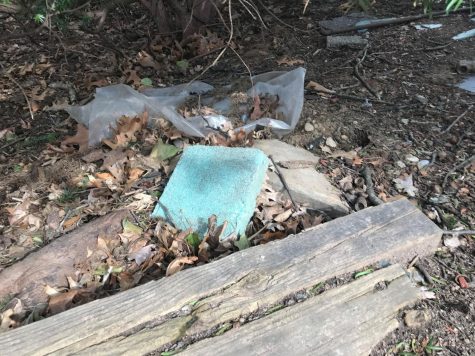
An old sponge and plastic have become one with the Earth around it. An estimated 299 million tons of plastics were produced in 2013.
We all need to stop with all the pollution we are letting out. If we continue at this rate who knows how bad the Earth will end up and it could end up just not being livable on.
That’s why it is great how small towns like Glen Rock are putting a foot forward and trying to make the world and their community a better and cleaner place.
If other towns go above and beyond and do their part there is no telling on how good of a job we can do to make the Earth a better place than we found it.

Kevin Lederer is a senior at Glen Rock High School. This is his third year writing articles for the Glen Echo. He likes riding his bike and hanging out...



